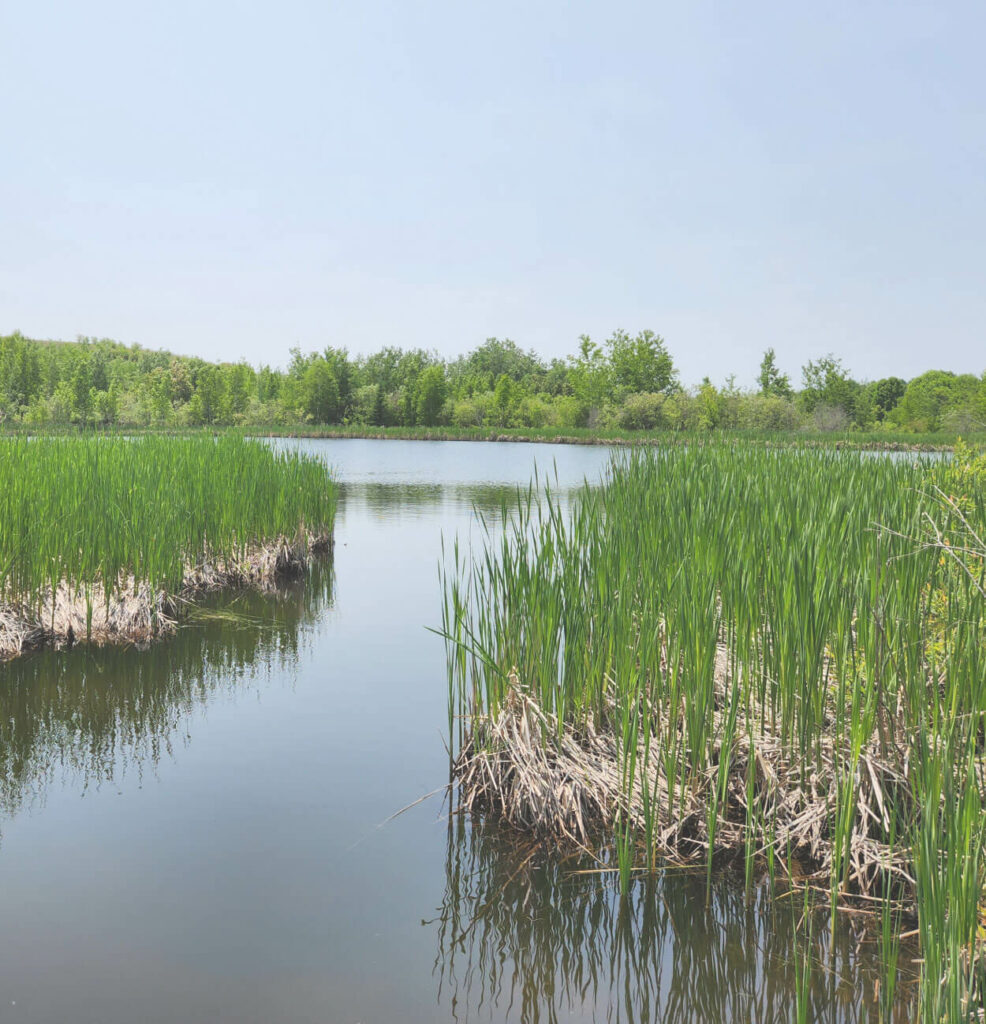Strong JV Partner for Development
Project development plan for the White Pine North project is supported by Kinterra’s financial and technical strength.

The White Pine North Project is a 34% owned brownfield project being developed by White Pine Copper LLC, a joint venture with Kinterra. The preliminary economic assessment completed in 2023 projects a 21.8-year mine life at a processing rate of 15,000 metric tonnes per day.
The project is located on M-64, directly across from the unincorporated town site of White Pine. The copper mineralization in the area of the former White Pine Mine occurs in the bottom 20 feet (6 meters) of the Nonesuch Formation at the contact with the Copper Harbor Conglomerate.
In July 2021, White Pine Copper LLC., a wholly owned subsidiary of Highland Copper at the time, successfully completed the acquisition of the rights, title and interest in the White Pine North Project from Copper Range Company, a subsidiary of First Quantum Minerals Ltd. In July of 2023, Highland Copper was able to publish the results of an updated preliminary economic assessment on the project, demonstrating the potential for strong project economics.
Also in July of 2023, Highland Copper and Kinterra Copper USA, LLC. signed a joint venture agreement on the White Pine North project in which Kinterra now holds a 66% stake. Kinterra brings substantial financial and technical strength to the partnership, as the joint venture works to advance the project through permitting, infill drilling and a feasibility study.
Project development plan for the White Pine North project is supported by Kinterra’s financial and technical strength.
The mine permitting process, rigorously managed by the state, follows established timelines for key milestones.
White Pine North was operated for over 40 years by Copper Range Company, producing over 4.5 billion pounds of copper.
The Preliminary Economic Assessment (PEA) was completed by, and under the supervision of, G Mining Services Inc. in collaboration with Foth Infrastructure and Environment, LLC. It provides a base case assessment of mining the mineral resources of the White Pine North Project on a stand-alone basis, where potential synergies with Copperwood are not considered. The Project is the extension of the historical White Pine mine which operated from 1953 to 1995. The results of the White Pine North PEA demonstrate the long-lived nature of the project with strong economics and cash flows.
Note: The reader is advised that a PEA is preliminary in nature and is intended to provide only an initial, high-level review of the Project potential and design options. The PEA mine plan and economic model include numerous assumptions and the use of Inferred resources. Inferred resources are too speculative geologically to have the economic considerations applied to them that would enable them to be categorized as mineral reserves and to be used in an economic analysis except as allowed for in PEA studies. There is no guarantee that Inferred resources can be converted to Indicated or Measured resources, and as such, there is no guarantee the Project economics described herein will be achieved.
Copper mineralization at White Pine was first recognized in the 1850’s, with small, short-lived mining operations beginning as early as in 1865. In 1907, Calumet and Hecla Mining Co. began drilling and discovered locally high grades of native copper. In 1929 Copper Range acquired the property, and after some more extensive drilling, began large-scale mining in 1953. Ore was milled, smelted, and refined directly at the mine site. Production from 1954-1995 processed over 198 million tons of ore containing more than 4.5 billion pounds of copper for an average grade of 1.17% Cu. The final operating depth of the mine was 760 meters when the mine closed in 1997, having passed through multiple ownerships in its later years.
In terms of tonnage White Pine is considered a first decile sediment-hosted stratiform copper-silver deposit based on USGS Open file report 2003-107, making it a world class deposit in terms of size. The White Pine deposit is geologically similar to deposits in central and Southwestern Africa, the Kupferschiefer deposits in Poland and Germany, the copper-silver deposits of Northwestern Montana, and others. Regionally, White Pine lies on the south flank of the Midcontinent Rift System, a 2,500 km long structure of Precambrian age.
For information on the White Pine North project’s resource estimate, download the slides from our corporate presentation deck.